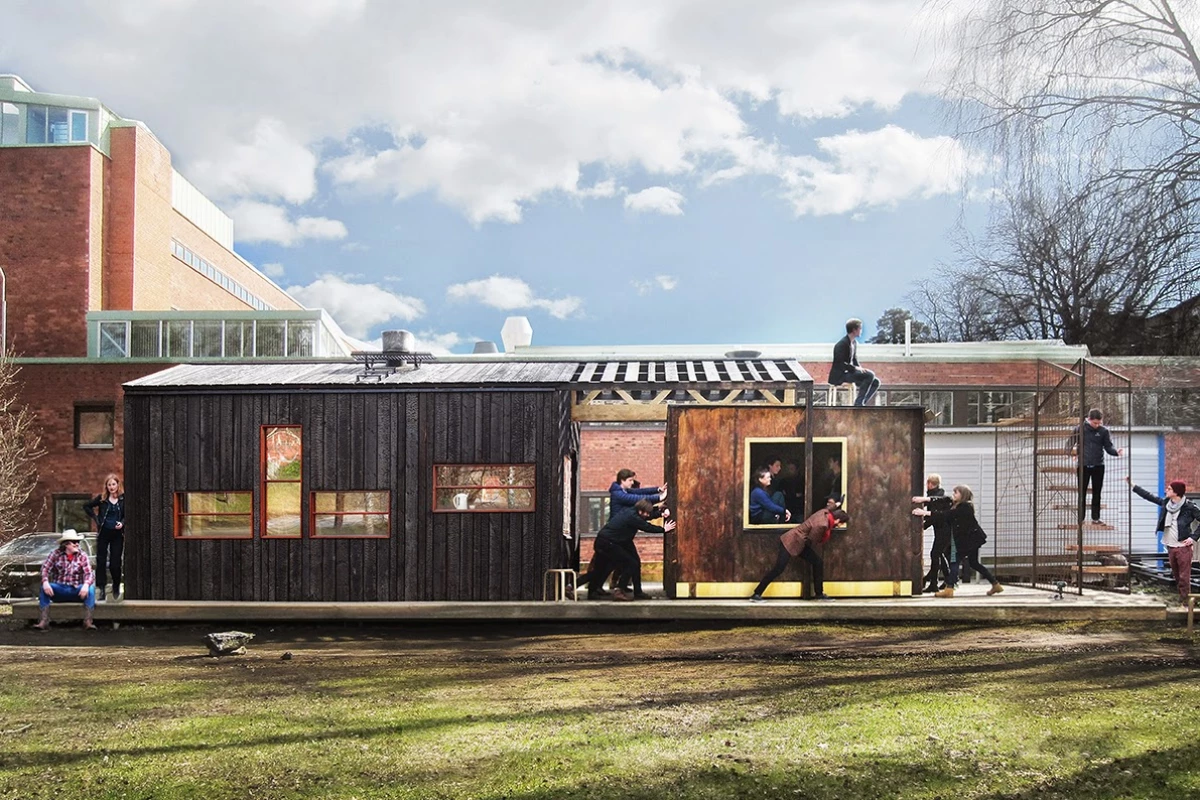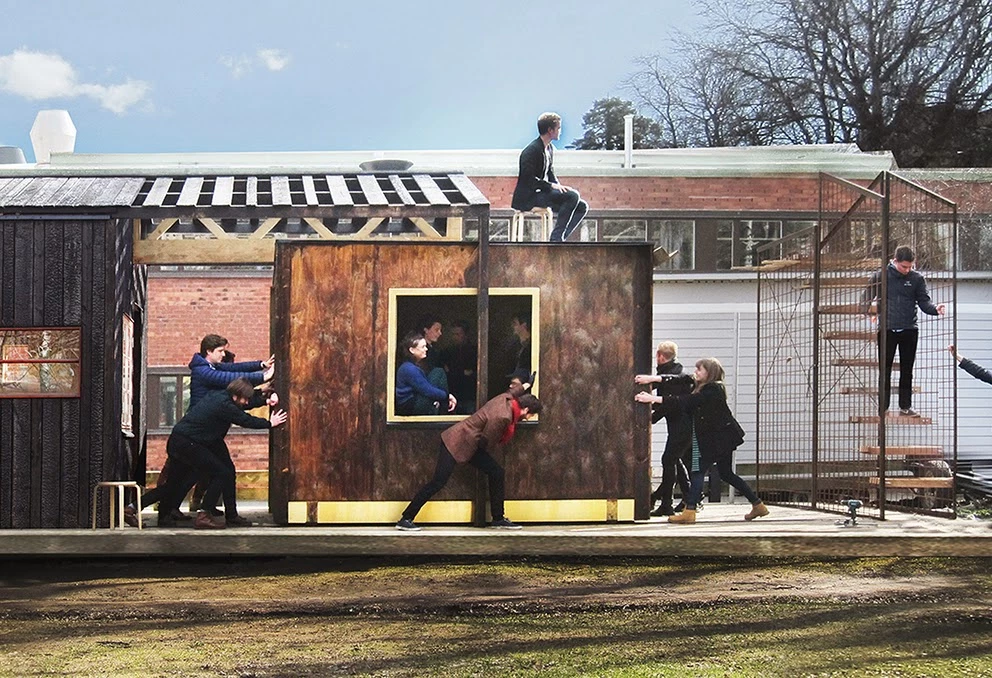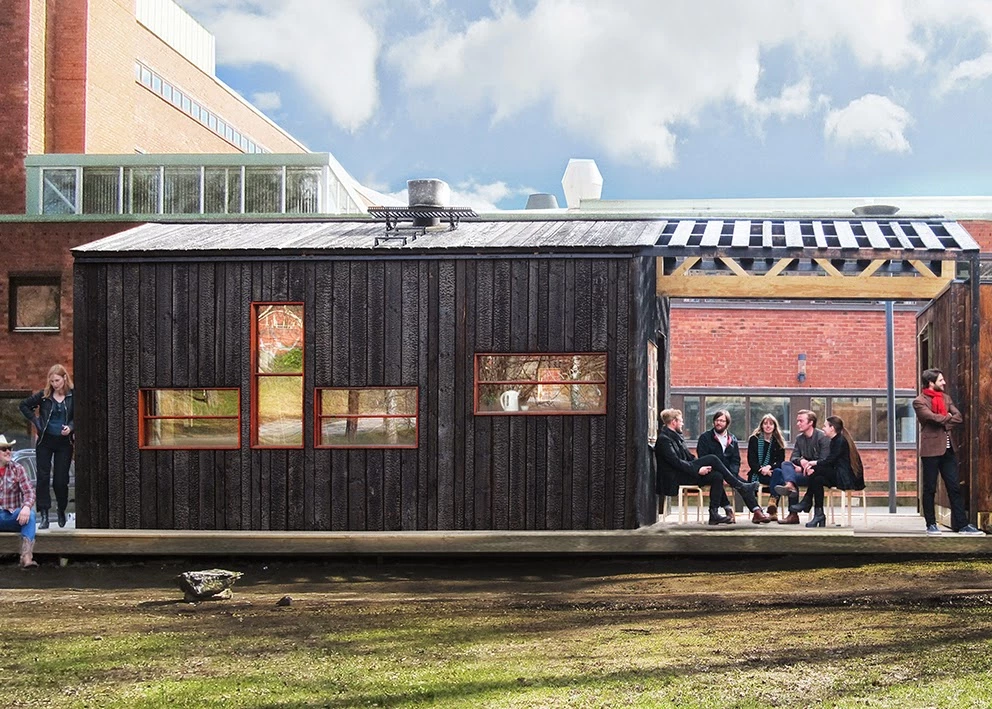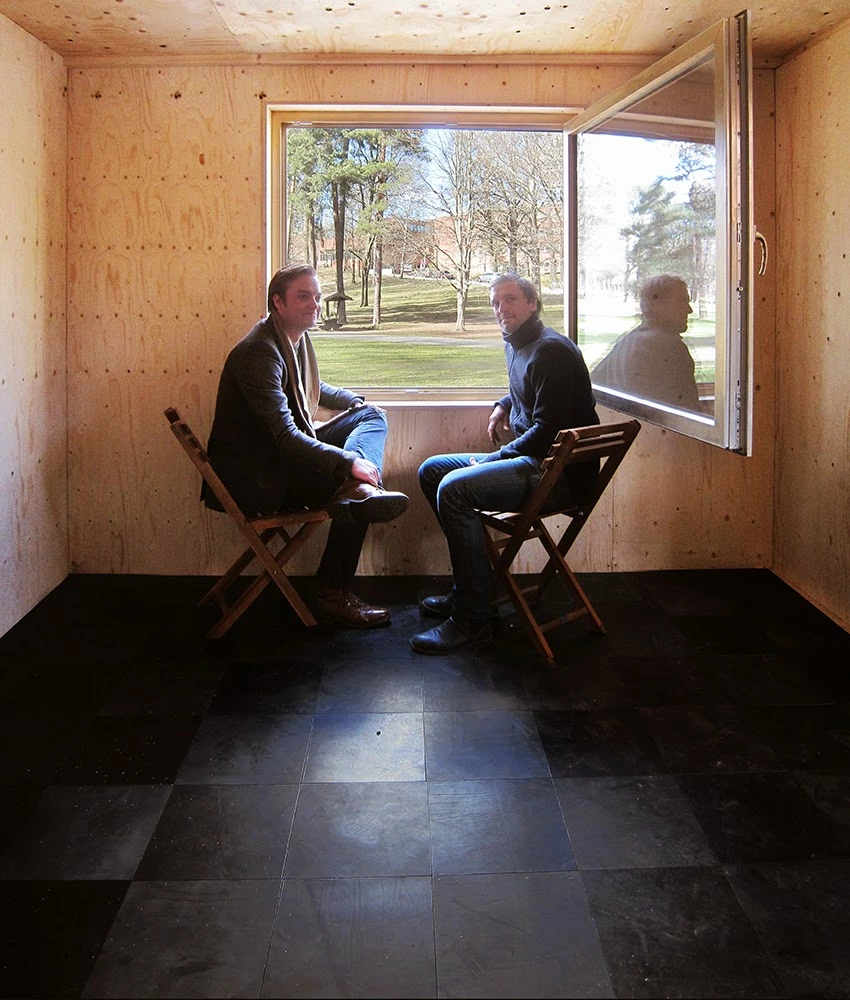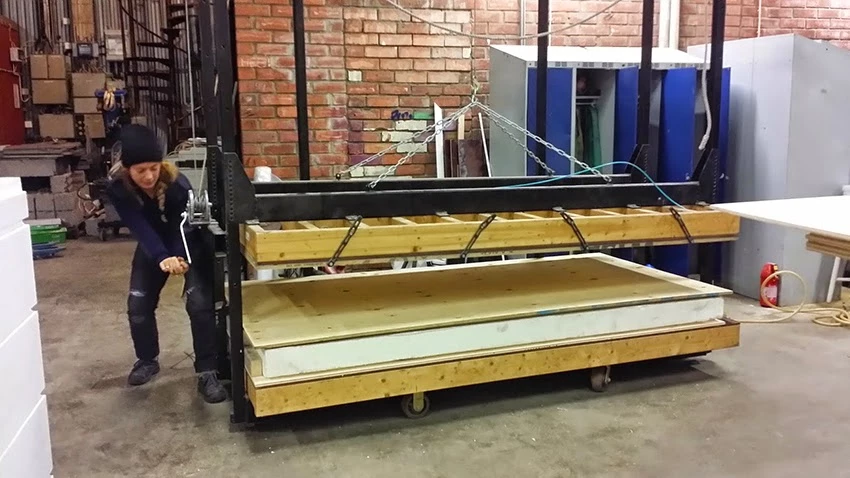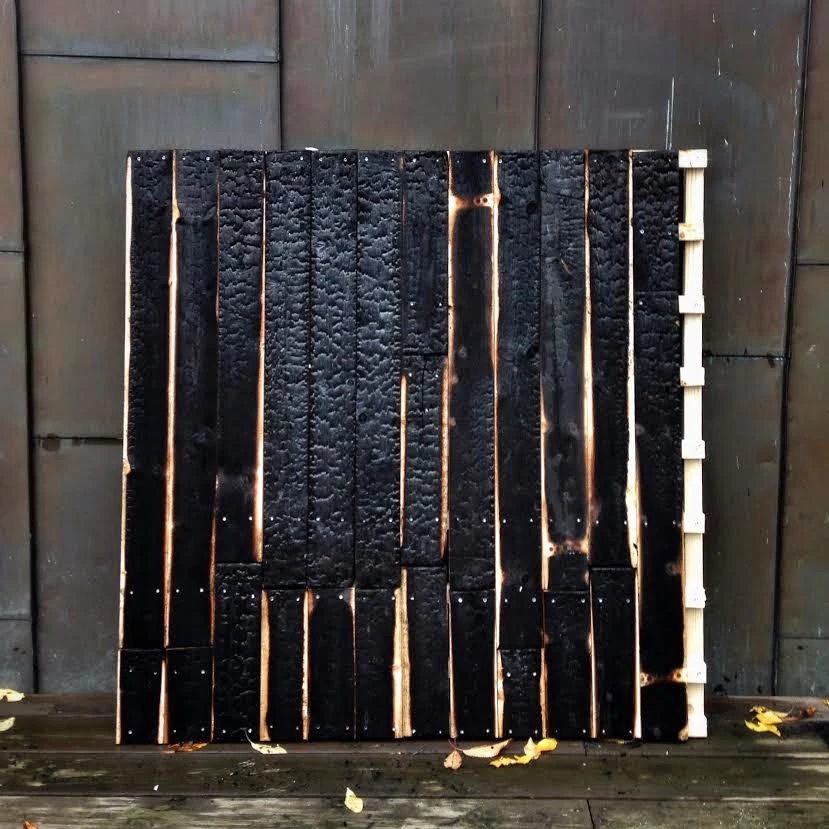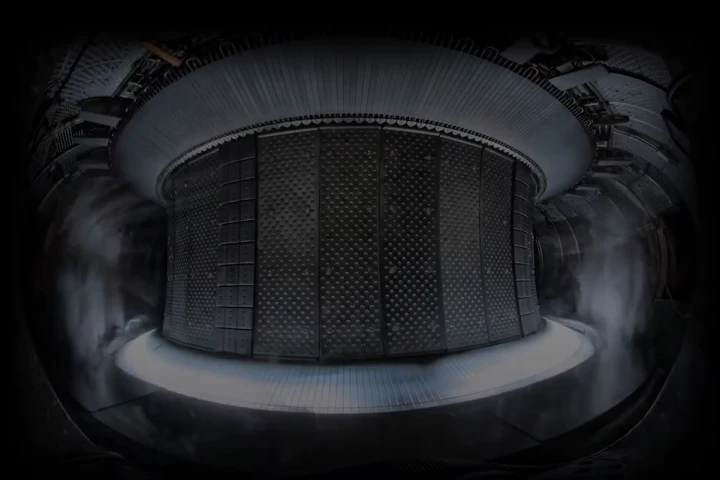Full Scale Studio, which is based at Stockholm's KTH School of Architecture, hit upon a novel plan to sidestep Swedish planning laws when constructing an inexpensive studio. Rather than build one large structure, Friggatto features two smaller buildings, one of which is set on wheels. It must be pushed a little way from its larger counterpart at least once every six months to avoid requiring a permit.
The larger building, dubbed Atto, features a total floorspace of 25 sq m (269 sq ft), and includes space-saving hinged tables, a wood-burning stove, a large work table, and storage space. The floor is made from mahogany that was reclaimed from a factory about to be demolished, while the wood cladding has been burnt using the Shou Sugi Ban method, as seen on The Observatory.
The smaller building is called Frigg. It measures 15 sq m (161 sq ft) and is set on wheels which run along a metal track. It can be slid by two people comfortably, or by one person with some effort. To ensure it's lightweight enough to move, the building is constructed from pine plywood that's glued to either side of a Styrofoam insulation board, while the exterior is treated in tar to protect it from the elements.

"When moving the 'Frigg' it equals a vehicle," explains Full Scale Studio. "But if it sits still more than six months at the same place, it is labelled a house. If the volume is standing separately, i.e. not physically connected to another house and with the possibility to walk around it, providing the possibility to maintain it, then the volume is permit-free and no municipal fee is charged.
"If it stands next to another house it needs to have a permit. Therefore the 15 sq m house will stand next to the 25 sq m for six months before you need to move it a bit and then connect again. This law suits Full Scale Studio quite well since we needed a bigger indoor-space during the winter and a roofed outdoor area during the warmer months to do other full-scale projects."
Friggatto was inexpensive to build, costing a total of around €16,000 (roughly US$18,000) thanks to the use of cheap and recycled materials. However, this doesn't include labor costs or land, so the final figure would be significantly higher. Fingers crossed the cheeky project continues to fly under the Swedish authorities' radar.
Source: Full Scale Studio
